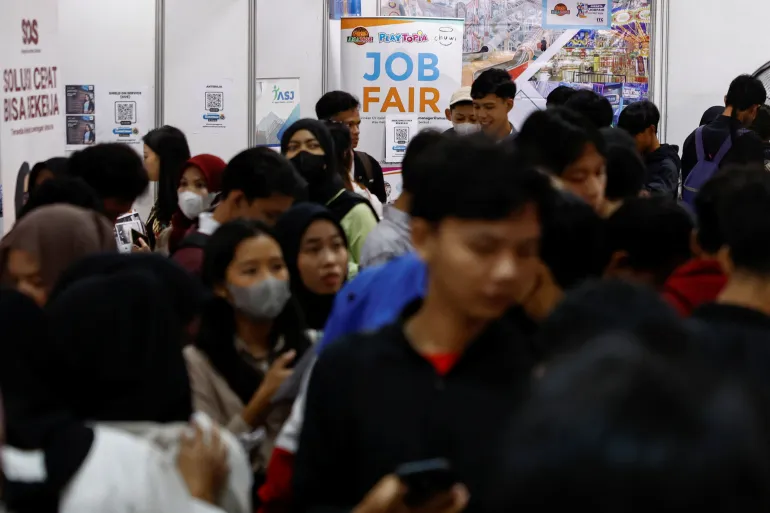The Indonesian economy continues to grow at a pace below the 5% mark, a threshold many economists consider essential for maintaining a healthy job market. This lackluster expansion sparks growing concerns about the country’s ability to absorb its rapidly expanding labor force.
Indonesia, with more than 270 million people, must sustain stronger economic growth to reduce unemployment and keep up with new entrants into the workforce. A GDP growth rate below 5% is simply not enough to support the demands of such a large population.
Economic Growth Under 5% Puts Pressure on Labor Market
When economic growth falls below 5%, the Indonesian economy struggles to generate sufficient job opportunities—especially in key sectors like infrastructure, retail, and manufacturing. These sectors typically rely on robust domestic demand to justify hiring new workers or expanding operations.
According to analysts, slower growth leads to cautious corporate strategies. Businesses cut back on hiring plans, delay investments, and minimize risks. This cautious stance limits employment generation and suppresses wage growth, exacerbating inequality and slowing consumer confidence.
Youth Unemployment Worsens Amid Slow Economic Recovery
The demographic dividend, once seen as Indonesia’s economic strength, now presents a challenge. Youth unemployment remains high as job creation lags behind the number of new graduates and skilled workers entering the labor force. The sluggish economic recovery following the pandemic and global uncertainties — including inflation and geopolitical tensions — have compounded the problem.
Investment Climate Still Lacks Momentum
Private investment, a key engine for employment growth, has not picked up as expected. Bureaucratic red tape, regulatory uncertainty, and infrastructure bottlenecks continue to deter both domestic and foreign investors. While the government has introduced policies such as the Omnibus Law to streamline regulations, the impact on job creation has yet to be fully realized.
Inequality in Regional Development Hampers Inclusive Growth
Indonesia’s economic slowdown also highlights the disparities between regions. Java Island still dominates economic activity, while other areas struggle to attract investment. This imbalance limits nationwide job creation and reduces economic inclusiveness. Without targeted policies to address regional inequality, job opportunities will remain concentrated in a few urban centers.
Structural Reforms Needed for Sustainable Employment
Experts argue that boosting job creation in a low-growth environment will require more than just stimulus packages. Structural reforms, including vocational education, labor law updates, and support for small and medium enterprises (SMEs), are essential. These reforms can improve workforce productivity and help bridge the skills gap that prevents many Indonesians from accessing formal employment.
Digital Economy Offers Potential but Remains Underdeveloped
The digital economy presents an opportunity to absorb new labor, especially for the tech-savvy youth. However, the digital ecosystem remains underdeveloped in many regions. Expanding internet infrastructure and digital literacy programs is vital if Indonesia wants to tap into this sector for meaningful job creation.
Conclusion: Subdued Growth, Complex Challenges
Indonesia’s economic performance below the 5% mark signals deeper structural challenges that go beyond macroeconomic figures. While the country has managed to stay resilient in the face of global headwinds, creating enough jobs for its people will demand bold policy moves, increased investments in human capital, and regional development strategies. Without such efforts, the dream of inclusive and equitable growth may continue to slip away.



